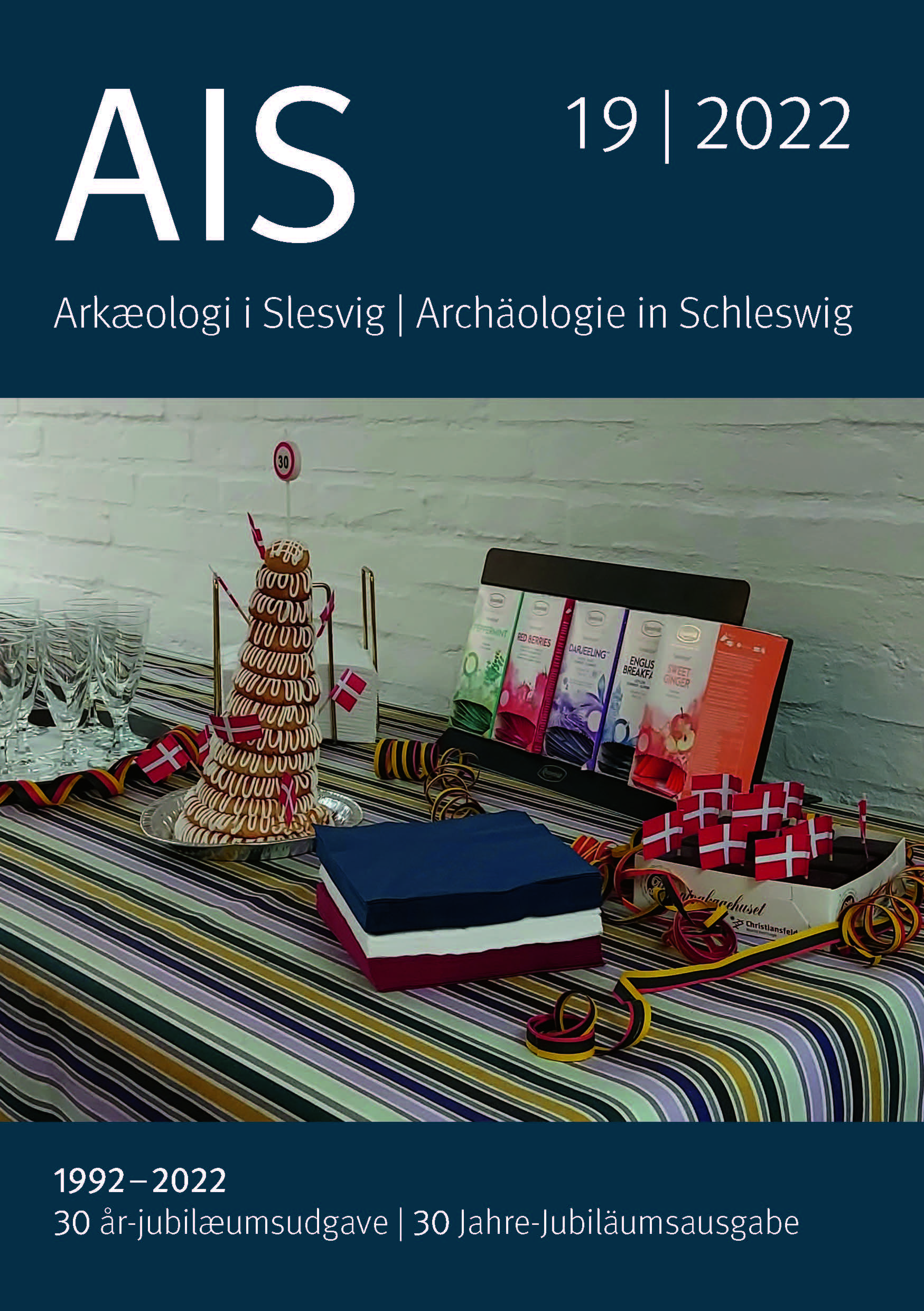Detektorafsøgning ved Petersborg
Resumé
The use of metal detectors and the developer
funded archaeological excavations have
long been separated – only rarely was the
use of metal detectors incorporated as a tool
on typical developer funded excavations.
One example of this are the excavations at
Petersborg during the period 2014 –2021
where Museum Sønderjylland used metal
detectors systematically. The excavations
revealed settlement evidence from the Neolithic
period and Late Bronze Age, as well as
a village in two phases dating to the Early
and High Middle Ages. Amateur archaeologists
organised rallies there in advance of
the excavation campaigns, and systematic
searches were carried out during the excavations.
The many small finds were registered
using a hand-held GPS device, and
the data was subsequently plotted in MapInfo.
By comparing the metal finds with
other types of evidence, knowledge about
the local rubbish policy as well as information
about which types of metal objects the
people of the village used during the Early
and High Middle Ages can be gained. The
incorporation of metal detectors on excavations
will not only add other types of objects
to the excavation results, but also improve
our understanding of sites which have been
identified but not yet excavated.
Downloads
Publiceret
Citation/Eksport
Nummer
Sektion
Licens
Copyright (c) 2023 Tidsskrift og forfatter

Dette værk er under følgende licens Creative Commons Navngivelse – Ikke-kommerciel – Del på samme vilkår (ShareAlike) (by-nc-sa).
Tidsskriftet er ikke ansvarlig for indhentelse af tilladelse fra tredjepart i forhold til brug af illustrationer m.m, ved eventuel genudgivelse af materialet.
Forfatteren er alene ansvarlig for at indhente samtlige rettigheder til publikation af kortmateriale, billeder, grafisk materiale etc.
Forfattere, der publicerer deres værker via dette tidsskrift, accepterer følgende vilkår:
OPEN ACCESS: Forfatteren bevarer ophavsret og giver tidsskriftet første ret til publicering.





